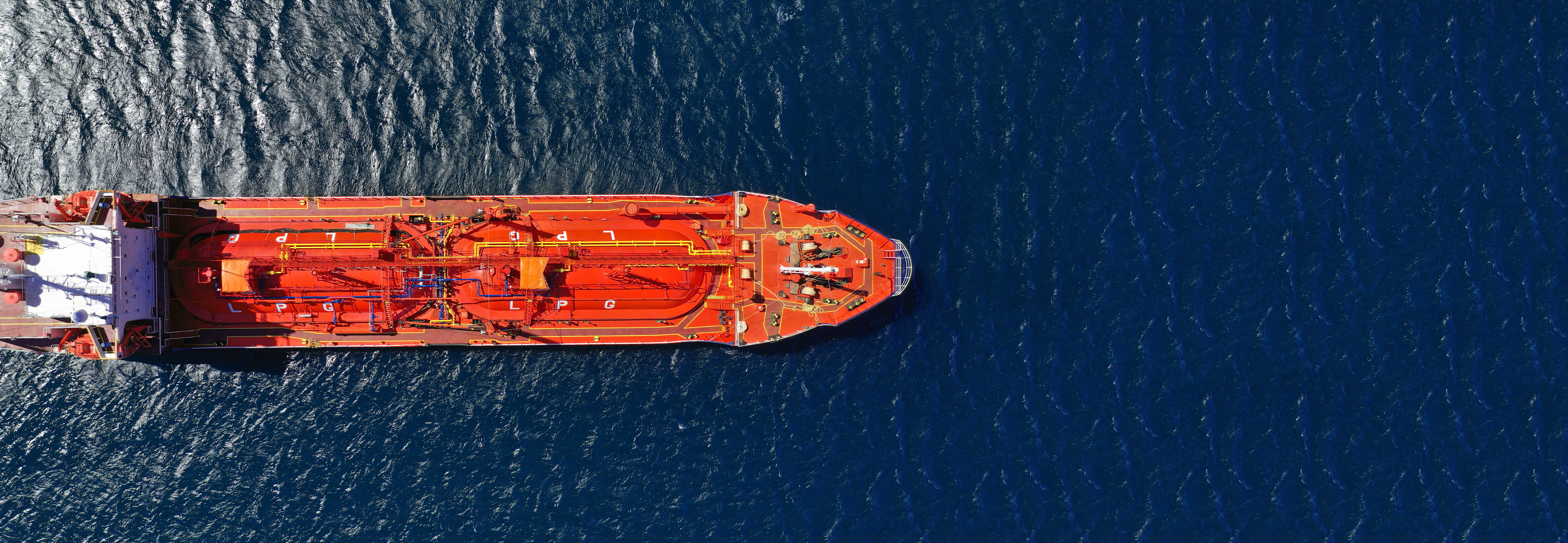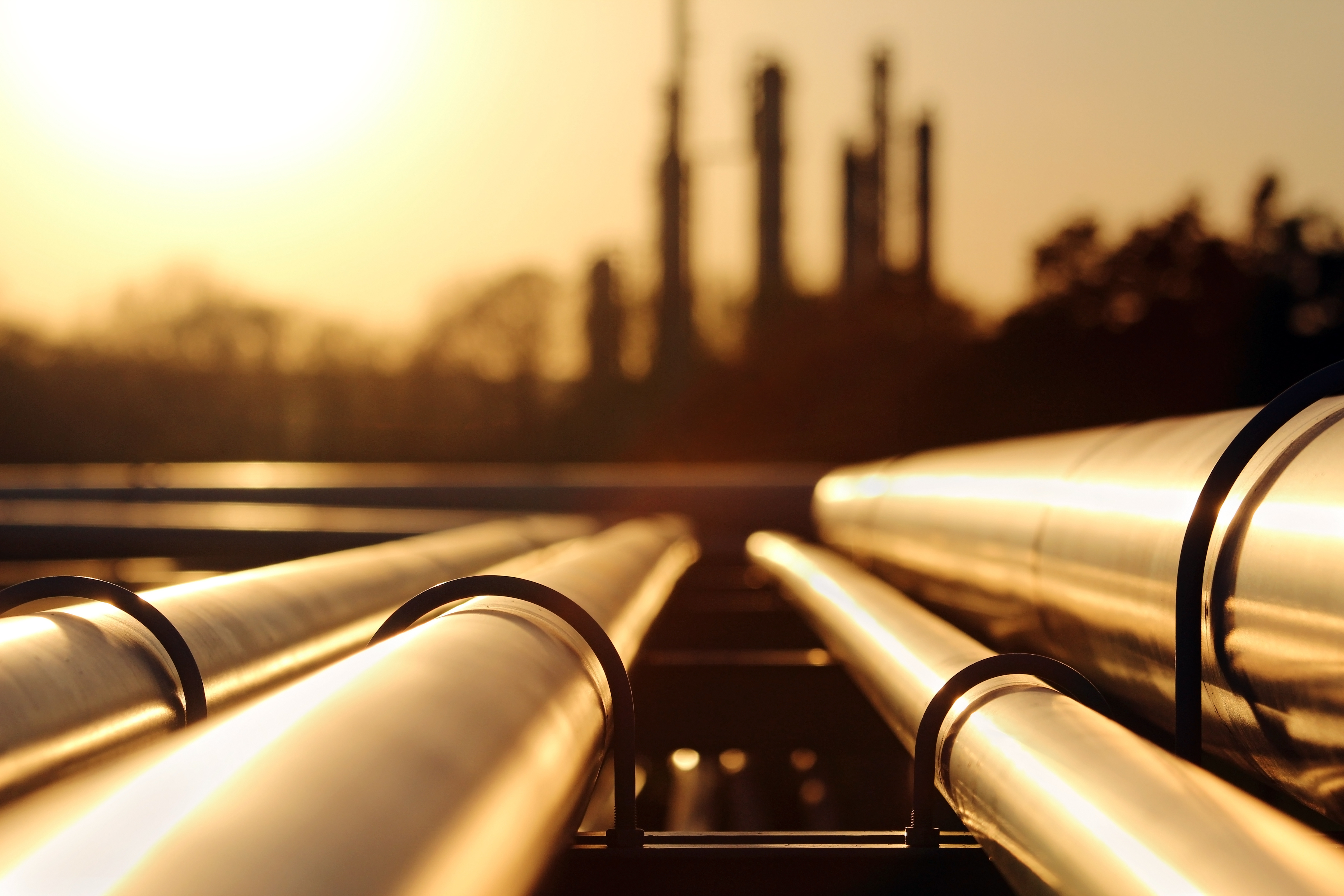Natural Gas Liquids Pipeline Transportation System
Overview
Natural gas liquids (NGLs) are hydrocarbons that are typically extracted from natural gas but are also produced in smaller volumes as part of crude oil refining and at oil sands operations. NGLs include ethane, propane, butane, pentanes-plus, and condensate. Pentanes-plus and condensate are like a very light crude oil, and as such are considered as part of the transportation and market dynamics discussed in the crude oil section of this report.
NGLs are transported by pipeline, truck, rail, and marine. While most of Canada’s propane and butane is delivered to market by rail tank cars, ethane is delivered only by pipeline. Trucks primarily deliver propane to end-use customers, and marine vessels deliver NGLs to overseas markets.

Canadian production of NGLs grew to new highs in 2018 and 2019, driven by growing liquids-rich natural gas production in western Canada, particularly in the Montney and Duvernay plays in Alberta and British Columbia (B.C.). Production growth was driven mainly by propane and butane. Ethane production was stable between 2015 and 2018, and declined slightly in 2019. Ethane is produced largely to meet petrochemical demand, and any that is not needed is left in the natural gas stream in a practice called ethane rejection. Ethane rejection in 2019 is estimated at 169.0 Mb/d (26.9 10³m³/d), a nearly three-fold increase from the amount of ethane rejected in 2015.
As shown in Figure 22, NGL production is projected to grow to 716.1 Mb/d (113.9 10³m³/d) in 2020, a 1.7% increase from 2019.
Source and Description
Source: CER - Canada’s Energy Future 2020.
Description: This stacked bar graph illustrates Canada’s production of ethane, propane, and butane from 2015 to 2020. Data includes production from gas plants, refineries, and oil sands off-gas facilities. In 2015, production totaled 566.2 Mb/d (90.0 10³m³/d). In 2019, production grew to 703.6 Mb/d (111.9 10³m³/d). Production is projected to grow to 716.1 Mb/d (113.9 10³m³/d) in 2020. Of this total, ethane production is projected at 240.6 Mb/d (38.3 10³m³/d), propane production is projected at 282.9 Mb/d (45.0 10³m³/d), and butane production is projected at 192.6 Mb/d (30.6 10³m³/d).
NGL Markets
NGLs are consumed widely across Canada. The largest consuming province is Alberta, followed by Ontario and Quebec. Ethane is mainly consumed as a petrochemical feedstock to produce plastics. Propane has a variety of uses and is popular as a heating fuel in the residential, commercial, industrial, and institutional sectors. Propane is also a common fuel for space heating and for crop drying in the agricultural sector, and a feedstock for petrochemicals. Butane is largely used by refineries for gasoline blending, and in the oil sands as a diluent.
In addition to the ethane produced domestically, Canada imports ethane from the U.S. Ethane is imported by pipeline into Saskatchewan (for use in Alberta) and southwestern Ontario. In 2020, Canada imported 93 Mb/d (14.8 10³m³/d) of ethane from the U.S. Low-cost ethane is abundant in the eastern U.S. near the Marcellus and Utica shales of the Appalachian Basin and in North Dakota, where the Bakken Formation of the Williston Basin produces liquids-rich gas. Ethane-import pipelines for Alberta and Ontario’s petrochemical sectors have generally operated at high capacity. In Ontario, NOVA Chemicals Corporation is expanding its Corunna petrochemical facility capacity by more than 50%, with an expected completion date in late 2021.
Most Canadian propane and butane production is exported. In 2020, Canada exported 159.6 Mb/d (25.4 10³m³/d) of propane and 35.9 Mb/d (5.7 10³m³/d) of butane.
Source and Description
Source: CER - Commodity Statistics.
Description: This graph illustrates historical monthly propane and butane exports from Canada to the U.S. and elsewhere by mode of transportation: pipeline, railway, truck, and marine. Products move mostly and increasingly by rail in a seasonal pattern, with higher shipments in winter months. Smaller amounts move by pipe and truck and are fairly consistent over time. Marine shipments of propane started in May 2019.
Propane: In 2020, 100.9 Mb/d (16.0 10³m³/d) was exported by rail, 39.1 Mb/d (62.2 10³m³/d) by marine, 13.1 Mb/d (20.9 10³m³/d) by pipeline, and 1.0 Mb/d (10.4 10³m³/d) by truck.
Butane: In 2020, 31.1 Mb/d was exported by rail, 0.1 Mb/d by marine, 3.3 Mb/d by pipeline, and 1.4 Mb/d by truck.
As shown in Figure 24, propane and butane are exported primarily by rail and these rail volumes are highly seasonal – peaking during the winter heating season and declining over the summer. Smaller volumes of propane and butane are exported by pipeline and truck. Marine exports of propane from Canada started in May 2019.
Source and Description
Source: CER - Commodity Statistics
Description: This graph illustrates historical monthly propane and butane exports from Canada to regions in the U.S. and elsewhere by destination. Prior to 2019, traditional markets for propane included PADD I, PADD II, and PADD V. Starting in 2017, imports to PADD III began increasing as propane producers looked for access to export markets from marine terminals in the U.S. Gulf Coast. In 2019 and into 2020, propane exports rapidly increased to other destinations, including Mexico and Japan, while propane exports to traditional U.S. PADDs declined.
Propane: In 2020, 23.5 Mb/d (3.7 10³m³/d) was exported to PADD I, 34.2 Mb/d (5.4 10³m³/d) to PADD II, 6.3 Mb/d (1.0 10³m³/d) to PADD III, 6.0 Mb/d (0.9 10³m³/d) to PADD IV, 39.8 Mb/d (6.3 10³m³/d) to PADD V, and 50.8 Mb/d (8.1 10³m³/d) to other destinations.
Traditional destinations for propane exports include PADD II, PADD III, and PADD V – markets with significant crude oil refining capacity, or in the case of PADD V, terminal access to overseas markets.
Butane: In 2020, 5.0 Mb/d (0.79 10³m³/d) was exported to PADD I, 7.4 Mb/d (1.18 10³m³/d) to PADD II, 1.0 Mb/d (0.16 10³m³/d) to PADD III, 1.2 Mb/d (0.20 10³m³/d) to PADD IV, 20.9 Mb/d (3.32 10³m³/d) to PADD V, and 0.1 Mb/d (0.01 10³m³/d) to other destinations.
Figure 24 illustrates that propane and butane export destinations have shifted in recent years. While PADD II remains a key market for Canadian NGLs, propane exports to PADD III increased between 2017 and 2019 because of increasing exports to Mexico via rail, and exports to overseas markets from export terminals on the U.S. Gulf Coast. Exports of propane and butane to PADD V have grown because of the Petrogas marine terminal in Ferndale, Washington. The Petrogas Ferndale Terminal receives cargoes of Canadian propane and butane via rail and exports these NGLs to Asian markets.
The most notable change to propane exports is the growth of deliveries to non-U.S. destinations. In 2019, Canada’s first propane export terminal, AltaGas’s Ridley Island Propane Export Terminal, began exporting propane to Asia. AltaGas’s terminal was constructed with an export capacity of 40 Mb/d (6.4 10³m³/d) and was operating near capacity in 2020. Through higher efficiency, optimizing on-site facilities and rail-related logistics, AltaGas doubled its export capacity to 80 Mb/d (12.7 10³m³/d) in 2020. The CER approved Altagas’s application for increased exports in August 2020.
A second propane export terminal, Pembina Pipeline’s Prince Rupert Terminal, commenced exports in April 2021. Two more terminals are proposed: Pacific Traverse’s Kitimat Terminal and Vopak Pacific Canada’s bulk liquids (including propane) terminal on Ridley Island near Prince Rupert, B.C.
These export terminals provide western Canadian propane producers with access to markets in Asia, and Central and South America. All existing and proposed export terminals on Canada’s West Coast will receive their feedstock by rail.
Pipeline Capacity and Utilization
Enbridge Canadian Mainline’s Lines 1 and 5 deliver light crude oil, RPPs, and a mix of propane, butane, and condensate from Edmonton, Alberta to Sarnia, Ontario (and points in between). De-propanizers, facilities that remove propane from a mix of NGLs, exist in Superior, Wisconsin, and Rapid River, Michigan. The remaining mix is delivered to Sarnia where it is fractionated into specification products and ultimately delivered to markets in central and eastern Canada and the U.S. Midwest. Line 1 has a capacity of 237 Mb/d (37.7 10³m³/d) and Line 5 has a capacity of 540 Mb/d (85.9 10³m³/d).

Propane and butane exports by pipeline in southwestern Ontario mainly use Plains Midstream Canada’s (PMC) Eastern Delivery System (EDS), which operates between Sarnia and Windsor. EDS has a capacity of 150 Mb/d (23.7 10³m³/d).
Kinder Morgan’s 50 Mb/d (7.9 10³m³/d) Utopia Pipeline delivers ethane sourced from the Utica Shale and an ethane-propane mix from Harrison County, Ohio, to Windsor, Ontario. From Windsor, Plains’ Windsor-Sarnia Pipeline has a capacity of 50 Mb/d (7.9 10³m³/d) and delivers ethane feedstock to the NOVA plant in Corunna, Ontario and storage facilities in Sarnia. Utopia repurposed the eastern part of Kinder Morgan’s Cochin Pipeline and came into service in 2018.
Also near Sarnia is the Genesis Pipeline, which has a capacity of 37 Mb/d (5.9 10³m³/d). Genesis starts near Marysville, Michigan, crosses under the St. Clair River into Canada, and continues to NOVA’s Corunna facility. Genesis delivers ethane transported by the Mariner East pipeline from the Marcellus region.
The map in Figure 25 shows the various NGL pipelines regulated by the CER.
Figure 25. CER-Regulated NGL Pipelines

Source and Description
Source: CER
Description: This map illustrates CER-regulated pipelines that move NGLs in Canada, and includes an inset map that shows pipelines in the Windsor-Sarnia region.
Proposed Export Pipeline and Expansions
Pembina Pipeline’s liquids systems in western Canada, including the CER-regulated Pouce Coupé and Northern Systems, transport ethane-plus, propane-plus, and condensate from northeastern B.C. and west-central Alberta to the NGL and diluent hub in Edmonton, Alberta. Pembina’s Peace Pipeline system is being expanded in several phases to accommodate growing production from liquids-rich plays of the Montney, Duvernay, and other formations. The fourth and fifth phases of the expansion were put into service in late 2018, while the sixth, seventh, and eighth phases, originally scheduled for commissioning between 2020 and 2022, have been delayed because of COVID-19. The Pembina Peace Pipeline system originates in multiple points across northeastern B.C. and northwestern Alberta, and terminates in Edmonton. After completing the eighth phase, the Pembina Peace Pipeline system will have a capacity of 1 300 Mb/d (206.7 10³m³/d).
PMC’s PTC Pipeline starts at Empress, Alberta, and delivers propane and butane to several truck and rail terminals in Saskatchewan and Manitoba, finally ending at PMC’s Fort Whyte, Manitoba, terminal. PTC has a capacity of 15 Mb/d (2.4 10³m³/d).
The 68 Mb/d (10.8 10³m³/d) Vantage Pipeline (also called the Pembina Prairie Facilities) originates in Tioga, North Dakota, and moves ethane from Bakken gas production to the Alberta Ethane Gathering System at Empress, Alberta, which then delivers it to the NOVA petrochemical plant in Joffre. Vantage came into service in late 2014 and was later expanded to current capacity.
- Date modified:
